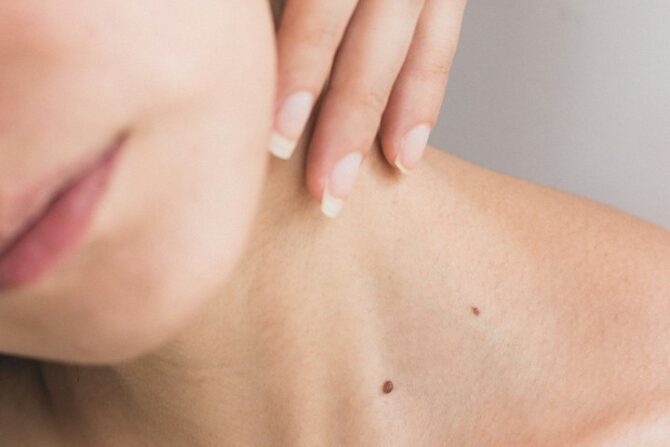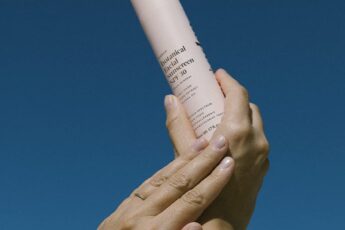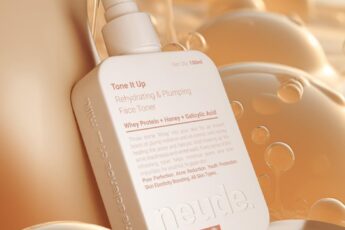Oh, the introduction of new skincare products can be such a fun but also somewhat nerve-wracking experience, especially when you’re not certain how your skin will react to it. If you are like me, every time you stumble upon a new moisturizer or serum, you probably tell yourself, “I hope this doesn’t make me break out!” That’s why you need to learn how to patch test skincare.
Well, the patch testing might be a simple step, but it is that one that will save you from a lot of trouble. Think of this as a skin-compatibility test to see whether your skin gets along with this newcomer or not. So, if you’re wondering how to test skincare safely, let’s go through it together; at the end, you will be more confident bringing new products into your routine without any surprises.
Table of Contents
What is Patch Testing and Why It Matters
First, let’s get clear on what the actual process of patch testing entails. You’re going to want to apply a small amount of the product to a specific area of skin, wait a set amount of time, and see how your skin reacts. Hence, finding out any allergic reactions or sensitivities before applying it all over your face.
Why does it matter? Our skin is so unpredictable. Even products boasting to be “sensitive skin friendly” or “hypoallergenic” can sometimes set off a reaction. Each of our skins has its own quirks, and what works so well for one person may just bring on irritation for another. I have had my share of surprises, so I’m all for testing a product first. That little step saves me from regret of impulsive slathering of new creams or serums and keeps my skin calm and happy.

How to Choose the Right Area for Patch Testing
So, where exactly should you patch test? You want to choose an area that won’t be too noticeable in case you have a reaction but is similar enough to the skin on your face. Here are the best places:
Inner Forearm: This is a very popular spot because it’s so easy to check, and usually it has sensitive skin.
Behind the Ear: The skin is nearly as fine and sensitive as that on the face, and is hence suitable. Besides, it is concealed, and therefore irritation doesn’t show.
Along the Jawline: This can give a quite good indication of how something feels if you’re testing a facial product. However, this is more visible, so use it only if you are comfortable with the slight chance that a reaction could show.
As a general rule, I use the inner forearm. It’s easy because it is pretty accessible, plus you can see any changes pretty easily. If it happens to react, you are well-covered with sleeves. Just make sure the area you decide to patch test is clean and free of other products before you start.
Step-by-Step Guide on How to Patch Test Skincare Safely
Glad we’ve chosen our spot now. Let’s dive into steps. Here’s a breakdown of how to patch test skincare:.
Step 1: Cleanse the Area
Start with a clean skin. Obvious, yet so very important. You do not want the makeup, lotion, or any other products getting in the way. Typically, I just wash the area quickly with a light cleanser, then pat it dry.
Step 2: Apply a Small Amount of the Product
Less is more here. Take a small dab-just a tiny bit, enough to cover an area about the size of a coin. You’re not aiming to coat the whole area, just a little spot. That way, if your skin does react, it won’t spread too much.
The best way I can describe doing a patch test is I think about tasting the food before ordering the whole meal. You’re just trying it out.
Step 3: Wait 24 to 48 Hours
Patience is a virtue here. I know, waiting can feel like forever, especially when you’re excited about a new product. But this part is crucial. You want to give your skin enough time to react if it’s going to. Generally, 24 hours is the minimum, though waiting a full 48 hours gives you a clearer answer.
If you’re one of those people whom it takes longer for the reaction to occur, adding more time can help. During this time, periodically take a look at the area for any signs of redness, itching, or swelling. I have had instances where everything looked and felt great at 24 hours then at 48 hours there would be just a slight redness showing.
Step 4: Look For Reactions
Wait for the elapsed waiting time and then carefully observe the site. What you’re looking for, in particular, includes:
Redness or Swelling: You could be allergic to the active.
Itching or Burning: Any unpleasant sensations mean that the product is too harsh.
Small Bumps or Rash: These usually come up when there’s an ingredient that your skin doesn’t agree with.
If you notice anything unusual, you might be better off avoiding that product, at least until you can narrow down which ingredient caused the problem. Remember: if your skin doesn’t like it in a small spot, it’s probably not going to like it all over your face.

What to Do If You Notice a Reaction
So, what does one do if it actually does react with your skin? I know; it’s such a bummer. You get all hyped up about this new serum, and it just ends up not being meant for you. Don’t freak out. Here’s what you do next:
1. Rinse the Area: First, you’ll want to gently rinse the area with water. The last thing you want is to further irritate it, so there should be no harsh scrubbing whatsoever.
2. Apply a Soothing Product: If it feels sore, you may put on some fragrance-free, non-irritating cream or some gel containing aloe vera. This soothes things down.
3. Observe the Reaction: Most mild reactions will calm down on their own after a period. If the redness, itching, or bumps intensify, however, you may consider visiting a dermatologist. I know it can be tempting to try to power through, but your skin will thank you for stepping back.
4. Sometimes it’s Fine to Pass on a Product: There are so many products out there, and that is completely okay if something doesn’t work. I always remind myself that skincare should feel good and not stressful.
Tips to Make Patch Testing a Habit
The best way to care for your skin is by making patch testing a habit. Trust me, it saves you from so much discomfort in the long run! I used to always skip that step because I thought I could “get away with it,” but more often than not, I faced irritated skin.
Here are just a few ways to make it a habit:
Commit to the Test with New Active Ingredients: If you use something that contains active ingredients, like retinol or acids, you’d better patch test. These are strong, active ingredients if your skin is not used to them.
Be patient, new exciting products: I know it’s really tempting to jump straight into a full-face application the moment you purchase something new. But think about this: a few days of testing are pretty much nothing compared to the weeks it might take for your skin to recover from a bad reaction.
Keep a Record of Past Reactions: If you find that you cannot use a particular ingredient, then make a note of this. This may help you in subsequent times and allow you to avoid using any products containing those ingredients.
Remind Your Friends to Patch Test: I’m always reminding friends to patch test because it’s such an easy way to protect your skin. You’ll be surprised how often people forget this step!

Conclusion
Patch testing might seem like an extra step; however, it is one that pays off for the peace of mind it buys. Testing a product takes little time, but it’s giving respect and care to the skin. Once it’s in your routine for skin care, just like brushing your teeth, it can take little time; just do it. And in turn, it makes one feel great. So the next time your eye catches a new serum or moisturizer, give patch testing a try. You and your skin are worth the extra care.
Frequently Asked Questions
How long should I wait during a patch test?
Wait at least 24 hours, but 48 hours can be more accurate. Some reactions take their time to appear, especially for sensitive skin types.
Can I patch test multiple products simultaneously?
You can, but it’s usually best to test one at a time. If you test multiples, use different spots so you won’t be confused about which caused a reaction.
What if I don’t see any reaction—can I use the product freely?
In case there is no reaction within 48 hours, it is usually safe to go. However, you must start off really slow-particularly with strong actives-to let the skin get used to it.
How often should I patch test new products?
Every time you introduce a new product! Even if it’s from a brand you trust, each formula is unique, and your skin may react differently.



